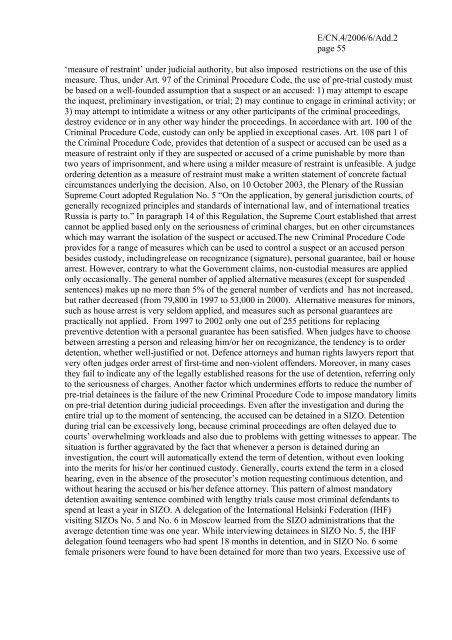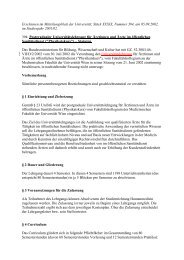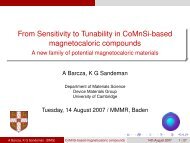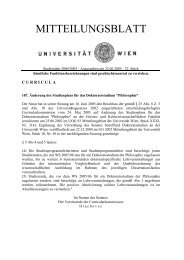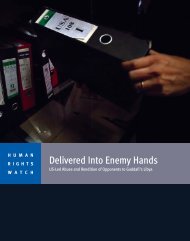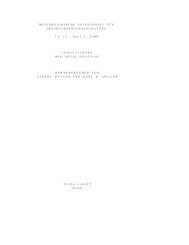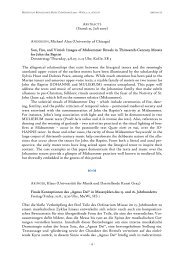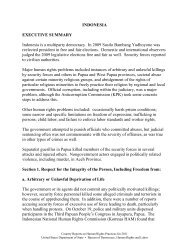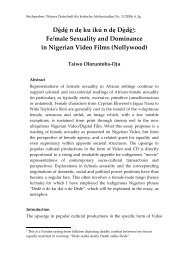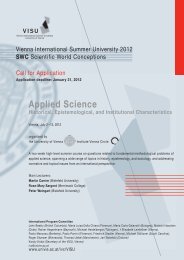E Economic and Social Council - acnudh
E Economic and Social Council - acnudh
E Economic and Social Council - acnudh
You also want an ePaper? Increase the reach of your titles
YUMPU automatically turns print PDFs into web optimized ePapers that Google loves.
E/CN.4/2006/6/Add.2<br />
page 55<br />
‘measure of restraint’ under judicial authority, but also imposed restrictions on the use of this<br />
measure. Thus, under Art. 97 of the Criminal Procedure Code, the use of pre-trial custody must<br />
be based on a well-founded assumption that a suspect or an accused: 1) may attempt to escape<br />
the inquest, preliminary investigation, or trial; 2) may continue to engage in criminal activity; or<br />
3) may attempt to intimidate a witness or any other participants of the criminal proceedings,<br />
destroy evidence or in any other way hinder the proceedings. In accordance with art. 100 of the<br />
Criminal Procedure Code, custody can only be applied in exceptional cases. Art. 108 part 1 of<br />
the Criminal Procedure Code, provides that detention of a suspect or accused can be used as a<br />
measure of restraint only if they are suspected or accused of a crime punishable by more than<br />
two years of imprisonment, <strong>and</strong> where using a milder measure of restraint is unfeasible. A judge<br />
ordering detention as a measure of restraint must make a written statement of concrete factual<br />
circumstances underlying the decision. Also, on 10 October 2003, the Plenary of the Russian<br />
Supreme Court adopted Regulation No. 5 “On the application, by general jurisdiction courts, of<br />
generally recognized principles <strong>and</strong> st<strong>and</strong>ards of international law, <strong>and</strong> of international treaties<br />
Russia is party to.” In paragraph 14 of this Regulation, the Supreme Court established that arrest<br />
cannot be applied based only on the seriousness of criminal charges, but on other circumstances<br />
which may warrant the isolation of the suspect or accused.The new Criminal Procedure Code<br />
provides for a range of measures which can be used to control a suspect or an accused person<br />
besides custody, includingrelease on recognizance (signature), personal guarantee, bail or house<br />
arrest. However, contrary to what the Government claims, non-custodial measures are applied<br />
only occasionally. The general number of applied alternative measures (except for suspended<br />
sentences) makes up no more than 5% of the general number of verdicts <strong>and</strong> has not increased,<br />
but rather decreased (from 79,800 in 1997 to 53,000 in 2000). Alternative measures for minors,<br />
such as house arrest is very seldom applied, <strong>and</strong> measures such as personal guarantees are<br />
practically not applied. From 1997 to 2002 only one out of 255 petitions for replacing<br />
preventive detention with a personal guarantee has been satisfied. When judges have to choose<br />
between arresting a person <strong>and</strong> releasing him/or her on recognizance, the tendency is to order<br />
detention, whether well-justified or not. Defence attorneys <strong>and</strong> human rights lawyers report that<br />
very often judges order arrest of first-time <strong>and</strong> non-violent offenders. Moreover, in many cases<br />
they fail to indicate any of the legally established reasons for the use of detention, referring only<br />
to the seriousness of charges. Another factor which undermines efforts to reduce the number of<br />
pre-trial detainees is the failure of the new Criminal Procedure Code to impose m<strong>and</strong>atory limits<br />
on pre-trial detention during judicial proceedings. Even after the investigation <strong>and</strong> during the<br />
entire trial up to the moment of sentencing, the accused can be detained in a SIZO. Detention<br />
during trial can be excessively long, because criminal proceedings are often delayed due to<br />
courts’ overwhelming workloads <strong>and</strong> also due to problems with getting witnesses to appear. The<br />
situation is further aggravated by the fact that whenever a person is detained during an<br />
investigation, the court will automatically extend the term of detention, without even looking<br />
into the merits for his/or her continued custody. Generally, courts extend the term in a closed<br />
hearing, even in the absence of the prosecutor’s motion requesting continuous detention, <strong>and</strong><br />
without hearing the accused or his/her defence attorney. This pattern of almost m<strong>and</strong>atory<br />
detention awaiting sentence combined with lengthy trials cause most criminal defendants to<br />
spend at least a year in SIZO. A delegation of the International Helsinki Federation (IHF)<br />
visiting SIZOs No. 5 <strong>and</strong> No. 6 in Moscow learned from the SIZO administrations that the<br />
average detention time was one year. While interviewing detainees in SIZO No. 5, the IHF<br />
delegation found teenagers who had spent 18 months in detention, <strong>and</strong> in SIZO No. 6 some<br />
female prisoners were found to have been detained for more than two years. Excessive use of


